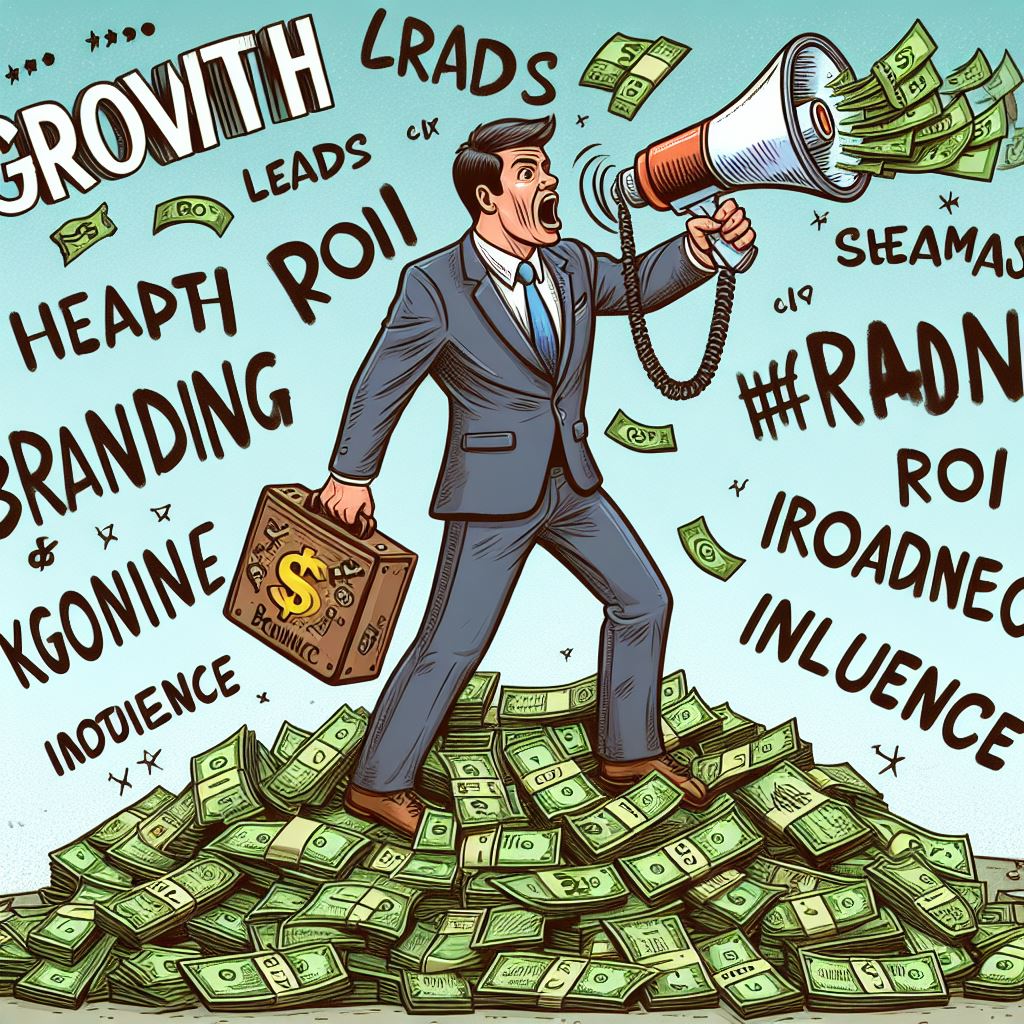This is Marketing – Book Review
By: Seth Godin
Introduction: Marketing as Culture and Change:
Marketing is a pervasive force with the potential to drive positive change. Rooting our work in the dreams, desires, and communities of those we aim to serve is the key to creating marketing that we can be proud of. This summary explores the essence of impactful marketing and the obligation to effect change responsibly.
Not Mass, Not Spam, Not Shameful:
Traditional marketing tactics are obsolete, replaced by the generous act of aiding others. Effective marketing involves understanding customers’ worldviews, connecting through honest stories, and offering genuine solutions. It rejects selfishness, coercion, and shortcuts, emphasizing a long, viable path to build meaningful connections.
The Marketer Learns to See:
The marketing process comprises five steps: inventing a valuable thing, designing it for a specific audience, crafting a matching story, spreading the word, and consistently showing up over time. Each step is crucial, with the fifth often underestimated. The marketer’s commitment to regular, generous engagement is vital for long-term success.
Marketing Changes People Through Stories, Connections, and Experience:
To market effectively, understanding the diverse lenses through which people perceive the world is essential. By caring enough to envision and share stories that resonate, marketers can facilitate actions aligned with customers’ desires. Emphasizing emotional benefits, such as belonging or connection, enhances the impact of marketing efforts.
The Smallest Viable Market:
Successful marketing requires a realistic focus on a specific, achievable change. Identifying the smallest viable market ensures targeted efforts, answering the question: “Who is this for?” A template prompts marketers to define their product’s purpose, target audience, and the transformation it promises, fostering clarity and effectiveness.
In Search of “Better”:
Defining “better” is subjective, varying for each individual. Marketers must communicate their unique value proposition, understanding customers’ beliefs and desires. By aligning offerings with customers’ dreams, marketers can attract the right audience in the modern marketing landscape.
Beyond Commodities:
Effective marketers differentiate by aligning with a group’s problem, solution, and desired change. Quality alone is insufficient, necessitating a compelling story that resonates with customers. Understanding and building upon the customer’s internal narrative fosters connection and drives meaningful change.
The Canvas of Dreams and Desires:
Marketers, in effecting change, offer customers an emotional state closer to their dreams. Focusing on selling feelings, status, and connection, rather than mere products, amplifies marketing impact. Observing and understanding customers’ aspirations allows for the creation of transactions that deliver desired emotions.
More of the Who: Seeking the Smallest Viable Market:
The best customers become advocates, facilitating word-of-mouth marketing. Prioritizing a few highly engaged customers over many mildly interested individuals proves more productive. Evaluating why some people don’t choose a product or service allows marketers to refine their offerings and better serve their target audience.
People Like Us Do Things Like This:
Human actions stem from internal narratives, and marketers drive change by normalizing new behaviors. Identifying and influencing these narratives creates cultural shifts, impacting choices. By understanding and shaping these narratives, marketers can effectively instigate change aligned with their objectives.
Trust and Tension Create Forward Motion:
Patterns govern people’s actions, and marketers can create change by disrupting established patterns and introducing tension. A marketer’s commitment to creating tension on behalf of positive change reflects genuine care for the cause. Successfully navigating and relieving this tension propels forward motion and facilitates lasting change.
Status, Dominance, and Affiliation:
Individuals’ desires to change or protect their status drive their actions. Marketers must recognize the distinction between internal and external status for effective communication. Acknowledging and catering to the varied status motivations within their audience allows marketers to craft tailored messages and drive desired actions.
A Better Business Plan:
Modern business plans should encompass truth, assertions, alternatives, people, and money. Aligning business goals with reality, clearly defining change objectives, and understanding the team’s capabilities are essential components. A comprehensive plan ensures transparency, accountability, and strategic viability.
Semiotics, Symbols, and Vernacular:
In a world where people scan rather than study, visual elements matter. Logos, stories, and appearances influence perceptions. Marketers must deploy symbols and signals specific to their audience to build trust. Ensuring alignment between these visual cues and the desired brand perception is crucial for effective communication.
Treat Different People Differently:
Satisfying existing customers is easier than causing dissatisfaction. Marketers should focus on those actively seeking solutions to the problems they can address. Enrollment in marketing efforts is mutual, and prioritizing those genuinely interested in change fosters meaningful connections, service, and profitability.
Reaching the Right People:
Effective marketing is about reaching the right audience and creating tension. The distinction between brand and direct marketing lies in post-ad actions. Measurement is crucial for direct marketing, while patience is required for brand marketing. Consistency in messaging and frequency builds trust and credibility over time.
Price is a Story:
Pricing is a critical aspect of marketing, influencing perceptions and assumptions. Marketing shapes pricing and, conversely, pricing shapes marketing. Aligning price with brand positioning is vital, as lowering prices can erode trust. Pricing should reflect the perceived value and quality offered by the product or service.
Permission and Remarkability in a Virtuous Cycle:
Permission marketing, centered on respect and promises, acknowledges the value of attention. Earning permission requires humility and patience. Remarkable projects naturally spread through word of mouth, underscoring the importance of delivering extraordinary value and experiences.
Trust is as Scarce as Attention:
In a connected yet distrustful era, focusing on ethical actions and genuine storytelling is crucial. Public relations, conveying stories to the right audience, outweighs publicity. Trust is earned by becoming famous within a specific tribe, emphasizing the importance of authenticity and ethical practices.
The Funnel:
Visualizing the marketing funnel as a journey with leaks highlights the importance of attracting the right people. Tension and alignment with promises ensure a smooth transition through the funnel. Empowering engaged customers with a voice enhances word-of-mouth marketing, reinforcing the idea that “people like us do things like this.“
Organizing and Leading a Tribe:
Acknowledging that a tribe isn’t owned but cultivated allows marketers to connect its members. Building a movement takes time and persistence, with the goal of creating a community that misses the marketer’s influence in their absence. Successful marketers patiently work towards fostering a sense of belonging and shared purpose within their tribes.
Marketing Works, and Now It’s Your Turn:
Striving for perfection hinders progress; instead, the pursuit of continuous improvement is essential. Marketing, as a process and craft, holds the power to spread stories, influence actions, and create value. The transformative potential lies in the stories marketers tell themselves, impacting their ability to contribute meaningfully.
Marketing to the Most Important Person:
The marketing we do for ourselves, shaping our internal narratives, is pivotal. Understanding our value and continuously seeking improvement enables marketers to create substantial value and be missed if absent. The journey involves embracing the iterative nature of marketing and recognizing the profound impact it can have.
Conclusion:
This insightful article delves into the multifaceted realm of marketing, portraying it not just as a commercial endeavor but as a potent force for positive cultural change. Emphasizing the shift from outdated mass marketing to a more personalized, empathetic approach, the author underscores the importance of understanding and connecting with the smallest viable market. The narrative unfolds through essential steps, urging marketers to craft compelling stories, build genuine connections, and provide transformative experiences. Throughout, the article stresses the need for authenticity, ethical practices, and a focus on long-term, meaningful engagement. From the intricacies of pricing as a storytelling tool to the significance of trust and attention in today’s interconnected yet skeptical world, each section contributes to a holistic understanding of modern marketing. The article concludes with a call to action, encouraging marketers to embrace imperfection, strive for continuous improvement, and recognize the profound impact their narratives can have on themselves and the world around them. It stands as a comprehensive guide for both aspiring and seasoned marketers, offering valuable insights into the art and responsibility of marketing in our ever-evolving society.







